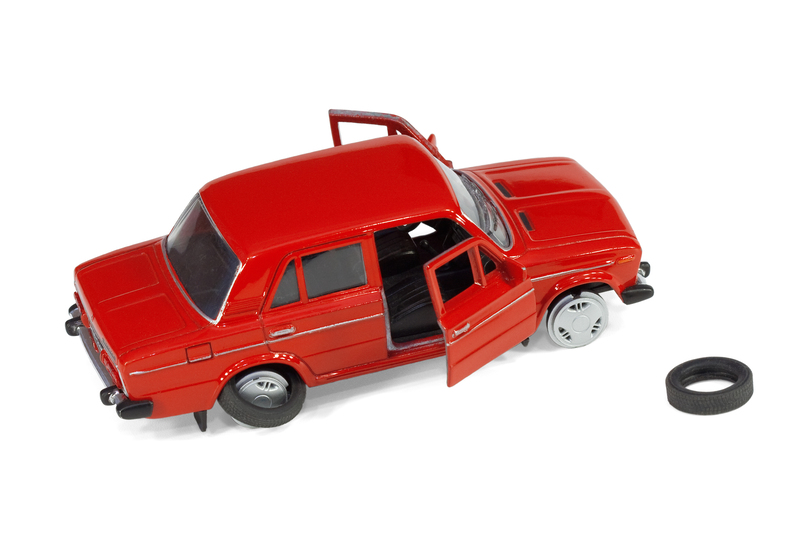The Mini Skip Lowdown: What It Is
Waste management is an essential part of any home renovation, commercial project or even a garden overhaul. In the world of efficient rubbish disposal, mini skips have swiftly gained popularity for their convenience, affordability, and practicality. But what exactly is a mini skip? How does it differ from other skip types, and why might it be the perfect solution for your waste removal needs? This comprehensive guide brings you the mini skip lowdown--what it is, how it works, and everything you need to know before hiring one.

What is a Mini Skip?
At its core, a mini skip is a smaller version of the traditional skip bin used for waste removal. These compact waste containers are designed specifically to make the disposal of small to medium-sized loads of waste both cost-effective and manageable. Typically, mini skips have a capacity ranging from 2 to 3 cubic yards (1.5 to 2.5 cubic metres), making them suitable for lighter or less bulky loads that don't require the size of a standard or builder's skip.
Here's a quick breakdown of the mini skip's key characteristics:
- Compact size--ideal for tight spaces or properties with limited access
- Affordable hire rates compared to larger skips
- Easy to fill due to their low height
- Suitable for domestic and light commercial projects
- Environmentally friendly through efficient waste segregation
Common Mini Skip Dimensions
The exact dimensions can vary slightly between skip hire companies, but generally, a mini skip will measure:
- Length: 1.2 to 1.8 metres (4 to 6 feet)
- Width: 0.9 to 1.2 metres (3 to 4 feet)
- Height: 0.75 to 0.9 metres (2.5 to 3 feet)
This size is ideal for locations with restricted access, such as urban driveways, garden paths, or small office forecourts.
What Types of Waste Can You Put in a Mini Skip?
Mini skips are best suited for general domestic waste and light commercial rubbish. Here's what you can (and cannot) put in a mini skip:
Acceptable Waste for Mini Skips
- Household junk - old toys, clothes, shoes, furniture (dismantled if large)
- Garden waste - soil, timber, branches, clippings, leaves, turf
- Diy debris - wall tiles, small amounts of bricks or rubble, plasterboard, old fittings
- Packaging - cardboard, plastic, polystyrene, paper
- Small electrical items - kettles, toasters (subject to local disposal rules)
Prohibited Items
- Hazardous waste - asbestos, paint, solvents, batteries, chemicals, fluorescent bulbs
- Large appliances - fridges, freezers, washing machines
- Tyres and mattresses - unless specifically allowed by your provider
- Liquid waste, gas cylinders or pressurised containers
Tip: Always check with your mini skip hire company about permitted and restricted items before booking.
Why Choose a Mini Skip?
There are numerous advantages to choosing a mini skip for your waste disposal needs, especially for smaller projects. Here are some compelling reasons:
1. Perfect Size for Small Projects
- Mini skips are specifically designed for projects that generate minor to moderate amounts of waste--think small room renovations, garden clearances, or spring cleaning.
2. Space-Saving Solution
- Thanks to their compact footprint, mini skips fit easily on most driveways or in gardens, eliminating the need for on-street permits in many cases.
3. Affordable Waste Removal
- Hiring a mini skip is generally cheaper than larger skip sizes. This cost-effective solution reduces your outlay while still providing ample capacity for most minor projects.
4. Environmentally Friendly Option
- Reputable skip hire firms sort and process your waste at authorised recycling centres. Choosing a mini skip helps streamline the recycling of household and garden waste, contributing to environmental sustainability.
5. Convenience and Time-Saving
- With a mini skip on-site, you can instantly dispose of waste as you work, saving trips to the local tip and avoiding clutter around your property.
Ideal Uses for Mini Skips
Mini skips are remarkably versatile. Some of the most common uses for mini skips include:
- Spring cleaning - declutter your attic, garage or spare room
- Garden makeovers - removing soil, turf, prunings and green waste
- Minor home renovations - bathroom/kitchen strip-outs, replacing carpets or wooden floors
- Small DIY projects - tiling, shelving or minor demolition work
- Office clear-outs - disposing of broken furniture, paperwork, or outdated electronics
How Does Mini Skip Hire Work?
The mini skip hire process is straightforward and hassle-free. Here's how it generally works:
1. Assess Your Waste Needs
Evaluate the volume of waste your project will generate. Mini skips suit projects producing up to 30 black bags' worth of rubbish. For anything more, consider moving up to a midi or builder's skip.
2. Book Your Mini Skip
Contact your local mini skip hire service and provide the details of your job, location and desired hire dates. Many companies offer same-day or next-day delivery for added convenience.
3. Skip Delivery
The skip will be delivered to your specified address, typically placed on your driveway or another accessible, flat area. If you need to place the skip on the public road, a permit from your local council may be required.
4. Fill the Skip Responsibly
Load your skip with permitted waste. Ensure you don't overfill--waste must not go above the skip's rim for safety reasons. Separate hazardous materials and follow guidelines from your provider.
5. Skip Collection
Once you're done, call your skip company to arrange collection. They'll transport the loaded mini skip to a licensed facility for waste processing and recycling.
Mini Skip vs. Midi Skip vs. Builder's Skip
What sets mini skips apart from midi or builder's skips? Understanding the differences helps you choose the right skip for your project.
- Mini skips (2-3 cubic yards): For small domestic projects, garden tidying, spring cleans
- Midi skips (4-5 cubic yards): For medium loads, bathroom/kitchen renovations, larger clearances
- Builder's skips (6-8 cubic yards): For major renovations, construction site debris, bulky waste
Choosing the smallest suitable skip saves you money and space while ensuring you meet your waste removal needs efficiently.
How Much Can A Mini Skip Hold?
Mini skips typically hold the equivalent of 25 to 35 black bin bags of rubbish. Here's a general guide:
- 2 cubic yard skip--about 20-30 bin bags
- 3 cubic yard skip--about 30-40 bin bags
This makes the mini skip ideal for modest clear-outs, light construction tasks, or post-garden cleanups.
Tips for Efficiently Using Your Mini Skip
- Break down bulky items before loading to maximise space
- Load heavier items first for stability
- Don't overfill--never pile waste above the rim
- Segregate waste wherever possible to aid recycling
- Plan ahead by organising all your rubbish before your skip arrives to minimise hire duration
- Check permit requirements if the skip must be placed on a public road
Environmental Benefits of Using a Mini Skip
Minimising landfill waste and promoting recycling is imperative in today's eco-conscious society. By choosing a mini skip from a reputable supplier, you ensure:
- Proper sorting and recycling of materials wherever possible
- Safe and lawful disposal of non-recyclable items
- Reduced carbon emissions compared to multiple car trips to the tip
Many skip hire providers now boast recycling rates of over 80%, making them a responsible choice for your waste disposal.
Frequently Asked Questions: The Mini Skip Lowdown
Do I Need a Permit to Hire a Mini Skip?
If placed on your private property (driveway/garden), no permit is needed. However, if the skip sits on a public road or pavement, you'll likely need a council permit. Check with your hire company, as they can usually arrange the permit on your behalf.
How Long Can I Keep a Mini Skip?
Typical hire periods range from 3 to 14 days. Speak with your provider for longer-term arrangements; they are often happy to accommodate extensions for a small added cost.
What Happens to My Waste After Collection?
Your filled mini skip is transported to a licensed waste transfer station. There, materials are separated for recycling, reuse, or safe disposal, minimising environmental impact.
Can I Move the Mini Skip Once Delivered?
No. Skips must not be moved once delivered, as this can damage the skip, property, or public surfaces, and may breach local regulations.
What If I Need a Bigger Skip?
If your waste exceeds the mini skip's capacity, contact your hire company to discuss upgrading to a midi or builders skip. Never attempt to overfill the skip, as this is both illegal and unsafe.

How To Choose the Best Mini Skip Hire Provider
- Compare rates and included services (e.g., permits, flexible pick-up)
- Check customer reviews and testimonials
- Ensure the company is fully licensed and insured for peace of mind
- Ask about recycling policies and environmental credentials
- Confirm skip sizes and availability for your chosen dates
Conclusion: Why the Mini Skip Is a Smart Choice
Whether you're decluttering your home, tidying up the garden, or managing a smaller DIY renovation, the mini skip proves to be an essential, efficient, and affordable waste removal solution. Its compact size, easy placement, and eco-friendly operation make it a favourite among homeowners, tenants, and business owners alike.
Armed with this mini skip lowdown, you are now perfectly positioned to assess your waste needs, compare providers, and manage your next project the smart way. Remember to always check local regulations, ask your hire company about any restrictions, and load your skip responsibly for maximum benefit.
Your project, your space, your mini skip--make rubbish removal easy and environmentally sound!